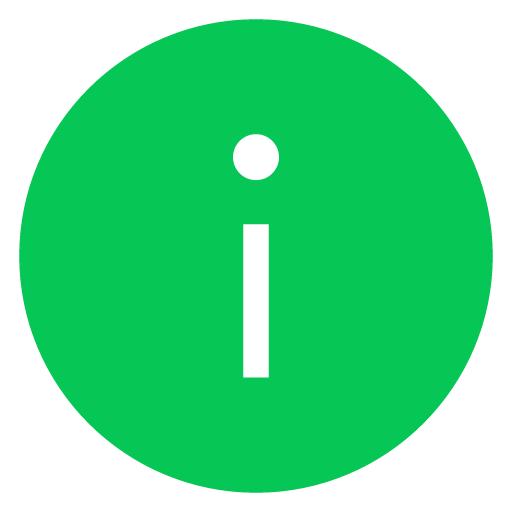We've received reports of scams aimed at using LINE accounts without authorization. These scams try to lure users into accessing fraudulent links in text messages or emails and then prompt them to enter personal information.
 Attention
Attention
 Useful info
Useful info

Topics covered
- How to tell if a message or email is a scam
- Typical methods of account theft and phishing damage
- How to avoid becoming a victim
- What to do if you logged into a phishing site
- What to do if you incurred financial damage
How to tell if a message or email is a scam:
If you receive a message similar to the examples listed below, it's likely a scam.
Note: If even one of these applies to you, please be cautious.
You received an email prompting you to log in to LINE or verify your login, even though you didn't initiate an account transfer yourself
LINE only sends account transfer or login verification notifications when you initiate the process yourself.
The link is suspicious
Official LINE websites basically end with a "line.me" link. Please do not access other links as they are likely to be fraudulent.
Note: Some LINE services may use links that do not end with "line.me".
Check whether the link is correct from this official LINE website.
A link might be a scam if:
• The domain name contains a string of other characters, such as ".com", after "line.me" (e.g. line.me.support.account.XXXXXX.com).
• There are nonstandard characters present, such as square-bracketed symbols (e.g. https://xxxxx-xxxx-ⅹⅹⅹⅹx-□□□.net/.../line.me) or full-width letters.
• Unrelated characters or hyphens (-) appear before "line" or "line.me" (e.g. x-line.me).
The sender's email address doesn't end with "@line.me"
Be sure to check the sender's email address. LINE only sends official emails from addresses that end with the "@line.me" domain (e.g. XXXX@line.me). Emails from other domains (e.g. XXXX@line.com) are not from LINE.
You're asked to enter or upload your LINE-registered or personal information
Any attempts to ask for your LINE-registered information (e.g. phone number, email address, password) or verification code, or for you to enter it on a screen, are all scams. Your LINE verification code will not be used for any purpose other than transferring your LINE account yourself.
The message exaggerates the urgency of the situation
Messages that include urgent language—such as "immediately" or "urgent"—or phrases like "within 48 hours," "LINE account suspension," and "usage restrictions" may be trying to alarm you. Please be careful.
Typical methods of account theft and phishing damage:
Messages on social media or LINE urging you to vote for something
Messages or links to pages urging you to vote for something, such as a candidate or someone's pet, will lead you to a screen that prompts you to enter information such as your phone number and password registered with LINE.
How LINE is impersonated to look official
You are lured to a fake page by messages using phrases such as "Verification required again" or "Security check."
This scam uses phrases such as "Confirmation required within 24 hours" to create a sense of urgency and lure you to a fake login page. The page then prompts you to enter your LINE registered information (phone number, email address, password, and verification code). Entering this information puts your LINE account at risk of being stolen.
LINE will never send emails like these. Do not access the link in these messages under any circumstances.
You are lured to a fake page by phrases such as "Your LINE account will be suspended" or "Your LINE account has been frozen."
Emails claiming "account suspension" or "freeze" may use sender addresses and subject lines that impersonate LINE. In some cases, they lead you to a fake page and try to get you to upload not only your LINE-registered information but also identity documents such as a driver's license or passport.
LINE will never send emails like these. Do not access the link in these messages under any circumstances.
Messages impersonating "new notification" alerts
You may receive text messages that say "New message notification" or "You have one message" and ask you to tap a link. LINE does not send text messages like these.Messages saying things like "Your account has been locked" or "Your LINE data has been lost" that link to fake sites
If you open the link in such a message, you will be taken to a fake page. LINE does not use this method to unlock accounts restricted for Terms of Use violations or to restore lost data.Other impersonation tactics
Text messages impersonating delivery companies
You may be sent messages from someone pretending to be a delivery person, saying things such as "You need to reschedule a delivery," "Delivery address unknown," or "Your package was kept on hold," trying to get you to access a link. Accessing the links in these messages may result in the installation of malicious apps or files, or redirect you to phishing sites posing as delivery services, potentially allowing remote access to your text messages.This unauthorized access poses the risk of third parties using your text messages to verify your phone number and create a new LINE account without your consent.
How to avoid becoming a victim:
• Don't reuse the same password between LINE and other services.
• Delete suspicious messages and links without opening them.
What to do if you logged into a phishing site:
If you accidentally logged in on a phishing site, refer to the following Help article based on your situation.
If you can use your LINE account
If you can no longer use your LINE account
What to do if you incurred financial damage:
If your LINE account was stolen, your family and friends may be sent messages asking them to buy prepaid cards, WebMoney cards/tickets, or other items. If you've incurred financial damage, please contact the police immediately.
See also:
My LINE account was or may have been stolen